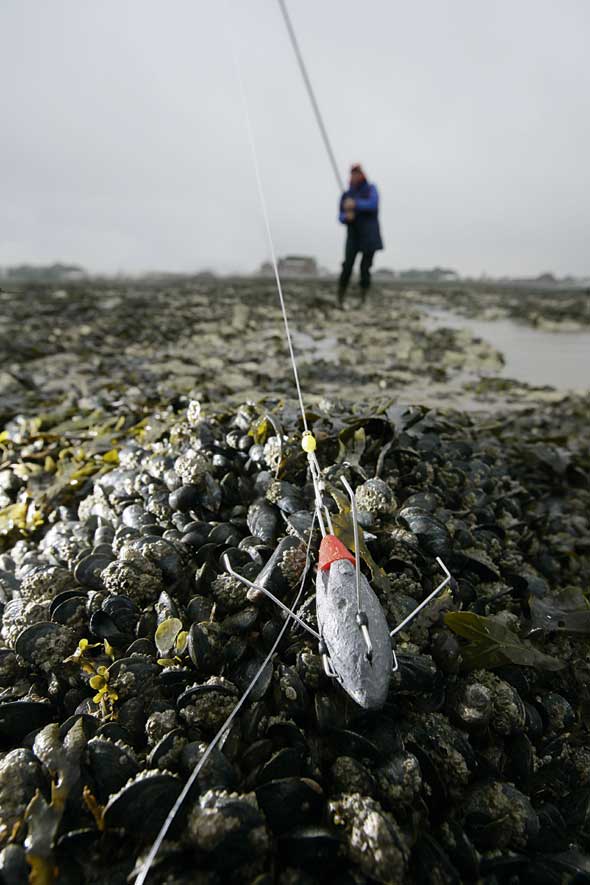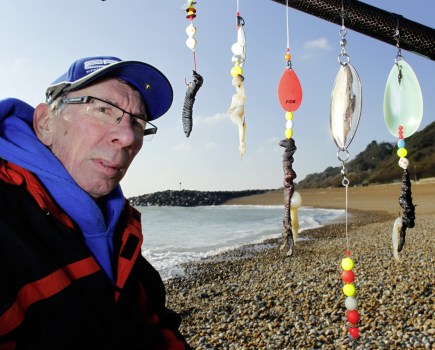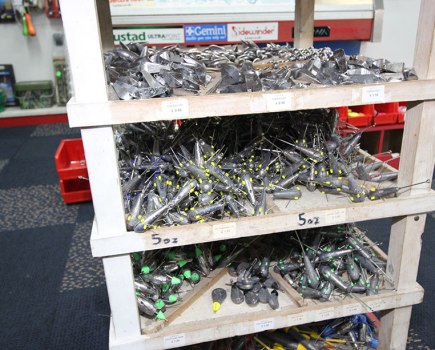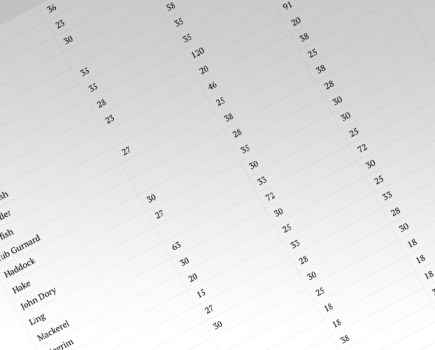Do you shy away from fishing among rocks or over snaggy ground? You do? Then that’s a shame because by moving out of your comfort zone you will catch more fish. First you must learn how to fish these marks…
THE GREAT ESCAPE
Losing tackle to snags is one of the particularly frustrating aspects of shore angling and it is a major reason why many anglers do not even contemplate fishing the more productive marks.
The word ‘snags’ sends a shiver down the spines of many sea anglers so they steer well clear of any sea bed that is not perfectly flat and snag free. Most flat sea beds are also preferred by the commercial fishermen, especially the trawlers, and in many regions species that like living on an open sea bed have been wiped out by trawlermen. On the rougher ground the fish are protected to an extent and it’s a fact that the rock species, like cod, wrasse and pollack, are almost always the most plentiful and the biggest fish around.
KNOW THE TYPES OF SEA BED
One of the first things you must realise is that there are rocks and then there are rocks. Some of the most horrendous-looking sea beds are nowhere near as bad as they look in terms of tackle snagging. Mind you, some also look easy and are not!
Viewing some venues at low tide can reveal specific places that will allow you to fish with better odds of retrieving your tackle, but on many others the layout of the foreshore can make a huge difference.
For instance, fishing high up from a cliff, pier or even a promenade can make fishing over a rough or mixed ground sea bed far easier because of the steeper angle of the line when it is retrieved. Similarly the depth of the water makes a difference with the shallow mixed ground sometimes more difficult to fish over than deepwater rough ground.
Before you dismiss a rough ground venue, check it out at low tide and look at the high tide line for the places that offer the best chance of getting your tackle back.
The range of different sea beds pose a problem for the angler and each bottom type may require a different terminal rig or tactics. The mix of sea beds is usually labelled as rough, mixed or clear ground, while some can be a combination of all.
TECHNIQUES FOR MAKING A GETAWAY
Always consider moving higher up the beach or pulling from a different angle
When your rig gets stuck, a steady pull of the line can often tell you whether the snag is going to be terminal.
Once line stretch has been taken up, the hook comes under strain and you get some idea about how badly stuck it is. Beware of pulling violently against any snag because this may break your rod.
A few gentle tugs upwards may pull your gear free – if not, try to get as high above the snag as you can by moving to the top of the beach.
A few careful pulls with the rod tip may free the snag immediately. If not then a change of line angle is worth trying. Move along the beach and try again. Failing that, let the line go slack and then try a few more gentle pulls. If you are still firmly hooked then a straight pull for a break is required, but do everything slowly.
Tighten the line, point the rod at the snag, take the strain off the reel spool by wrapping the line around the rod butt and step back gradually – this often releases the snag, if not the line will snap.
DEALING WITH TACKLE-HUNGRY FEATURES
Rocks and kelp
Keep tackle strong, simple and economic here because some tackle loss is inevitable. Have your spare rigs ready, especially reserves of sinkers, both plain and wired.
Hooks in sizes 2/0 and 3/0 Uptide or Viking patterns are very popular because they are soft and springy and can be pulled free from snags. Avoid really big rigid hook patterns, like the O’Shaughnessy, unless you are targeting conger eels. Moving just a few yards can make a retrieve easier so be aware of gaps between rocks and potential snags.
Mussel beds
These shellfish can sometimes close on the line, causing breaks, and there are lots of sharp edges from broken shells as well, so keep your line as high as you can.
On many mussel beds it is the edges where they meet the sand where the best fishing is found, so be sure you know the layout before you cast. Check out the mark over low water.
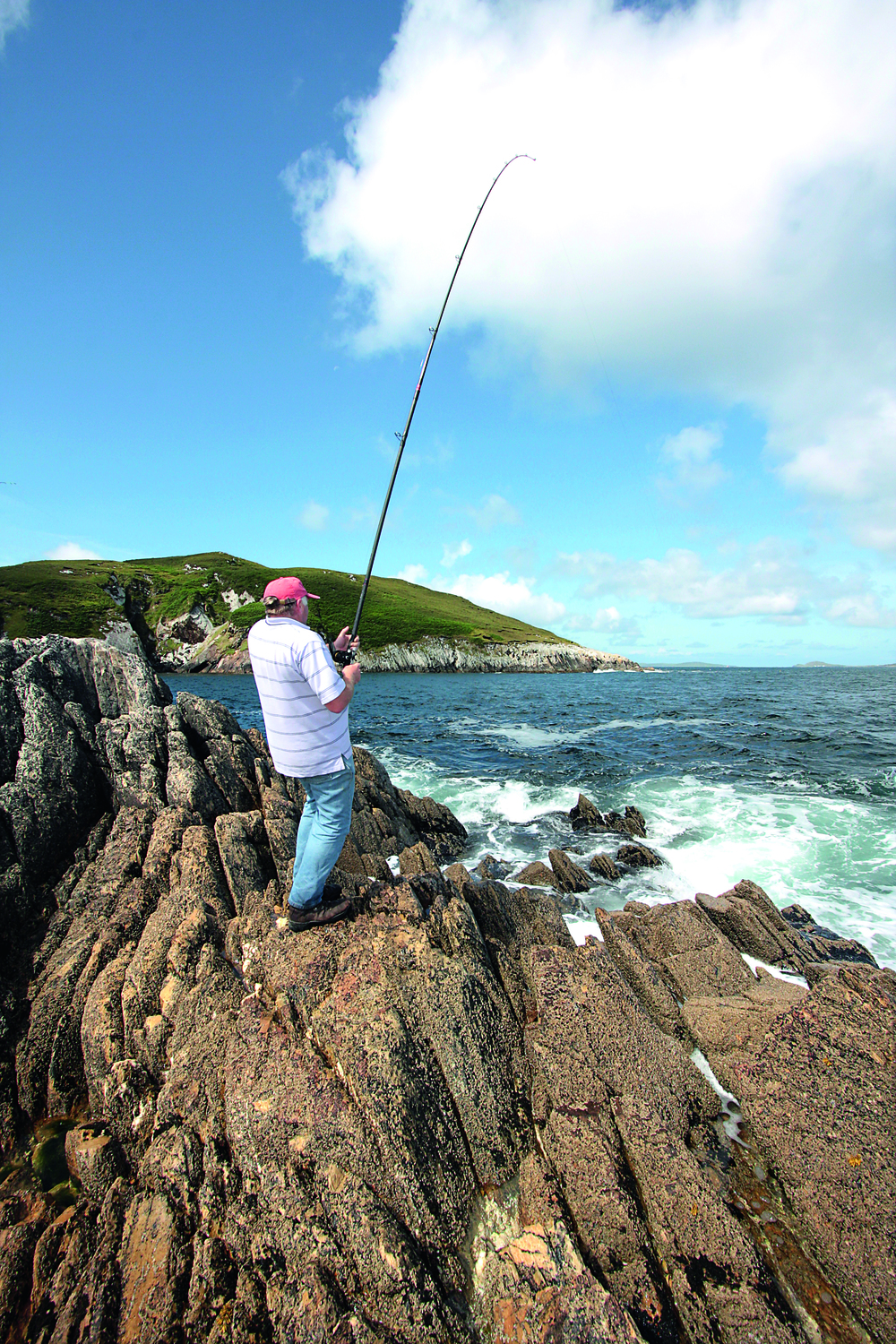 Chalk or peat ledges
Chalk or peat ledges
Knowing where the ledges, gaps, gullies and joints are located is a big advantage because with accurate casting you can pinpoint hot spots where gullies meet or open out. Again, check out the area over low tide. A lead lift (right) can help on venues where you need instant lift in the shallows to avoid a snag.
Small boulders and weed
Some of the worst angling venues are where there is shallow water and a mix of boulders creating lots of potential snagging spots.
In extreme cases anglers have employed weak link systems so that the loss of the lead weight means tackle, and hopefully fish, are retrieved. However, a weak link system is often only as good as the angler who is using it.
Sandbanks
Pulling tackle back over sand or mud banks can cause it to dig in or cut into the bank, so the initial turns of the reel handle are often crucial. Razorfish shells are also a risk to mono line.
Old groynes
Be careful where you cast around groynes because the tide can push your line over or among them. Some groynes have stabilisers or a bucket post at the end, so beware of these snags.
Mud
Shallow water and deep mud can allow a heavy lead, say 6oz plus, to sink deep into the sea bed where it becomes stuck. Avoid streamlined bombs, while wires also help prevent the lead weight going too deep in the mud.
A good tactic is to stop the cast just as your rig hits the water so that it lands in a splash rather than a high-speed nosedive, which will drive it into the mud.
Tackle snags
Perhaps the worst type of sea bed to fish over is one with lost tackle and line snags. Fixed grip leads with soft wires help here because they hold bottom quickly and will bend out of line snags.
Avoid breakout leads because the wire system can trap lost lines. Do not cast too far uptide, and use a heavier lead weight to reduce the movement of the tackle in the tide.
ARE YOU RETRIEVING CORRECTLY?
Why rigs get snagged is not always down to the type of sea bed or the angler’s choice of tackle. It is more likely to do with a very poor retrieval technique.
Reeling in slowly and dragging your hooks and lead weight through snags is a major cause of hook ups. The simple fact is that water actually gives a lead weight some buoyancy so a fast retrieve will invariably lift your gear clear of snags. It is those initial few turns of the reel handle that lift the gear off the bottom where the risk is the greatest, so this is not a time to dawdle.
Add to this the fact that the reel will invariably contain far less line after casting out, so a turn of the spool will retrieve less line, and you can see the root of the problem. This being the case, a full reel with a high gear ratio and a rapid retrieve are all required to avoid snags.
Occasionally the rig may snag up as it drops to the sea bed or, as often happens, the tide sweeps it into an obstacle, but there is no reason to lose a rig every cast if you employ the correct tackle and retrieve technique.
The strength of your tackle has a great effect on snagging and escaping snags, but it is usually a compromise.
Lighter line is accepted as more suitable for long-range casting, but it is weak when snagged compared a heavier breaking strain. Heavier line will not cast so far, so you need to choose the breaking strain that best suits the type of sea bed and range required.
TOP TIP
LIFT AND REEL FAST IN ONE MOVEMENT. DON’T STOP TO FEEL FOR A FISH, KEEP REELING
Fishing with the correct reel
Obviously no one reel is suited to all line breaking strains or varying loads.
Thick line requires a larger spool, while in general small reels will cope with clear sea beds, and larger, stronger models are needed for rough ground.
You cannot use a small casting reel for fishing rough ground because it will not hold enough line and is not fast enough to get the lead weight and your rig’s hooks up off the bottom quickly enough.
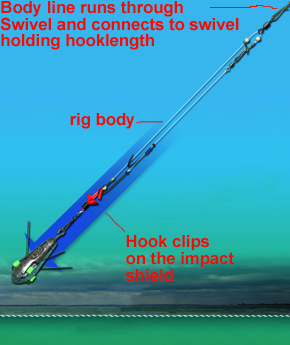
TOP TIP
Fewer hook cast further and allow the sinker to rise above a swag on the way in.
Rig choices for fishing rough ground.
Fewer hooks on a rig mean less chance of the tackle snagging
How many anglers read the angling press or take notice of what terminal rig design is all about, or even check the tackle shops for the available ready-made rigs? Similarly, how many follow a few simple rules and match their rigs to venues, species and baits?
Judging by the terrible rig examples we find lost on the low tide mark or among rocks, it seems most use really poor rigs. Even worse, these anglers blame the venue for the loss of these inadequate rigs.
Everyone knows that fewer hooks on a rig mean less chance of the rig snagging, or do they? Some anglers may also realise that smaller hooks are far less likely to snag and are easier to bend out of snags, although I doubt it, judging by the number of size 6/0 hooks I find.
The fact is that most sea anglers, especially novices, think they are fishing for big game. Modern hooks are extremely sharp and strong and I challenge any shore angler to prove why he needs a bigger hook than a size 3/0. Big hooks are only needed when fishing huge baits, such as a mackerel flapper, whole squid or a spider crab for tope and conger eels, when a size 6/0 is definitely required.
By far the best rig for snaggy ground is the pulley, which carries one hook bait either on a single hook or two hooks, Pennell-style. This rig comes in a couple of different design options, the straight pulley and the drop-down pulley (shown in issue 452).
Both work on the same principle – a rapid retrieve lifts the lead weight up in front of the bait or hooked fish and clear of the rocks and snags. Remember, I said ‘rapid retrieve’ because the rig design alone will not prevent you snagging. Your retrieve technique is more important. In fact, a good technique will get most of the conventional one-hook rig designs back from any rough ground.

